OCSP Funds in Action: Guelph Independent Living

Funding innovation and independent living in the City of Guelph
Ontario Community Support Association member Guelph Independent Living received relief funding allocations totaling over $25,000 which it used to provide clients with fresh food boxes and essential items, such as cleaning and hygiene supplies.
Click Here to Download Article
While the pandemic continues to bring uncertainty to the community support services sector, relief funding programs allow agencies like Guelph Independent Living to continue supporting adults with physical disabilities and seniors in our communities.
Read the entire article by clicking the download link below.
Share
More Updates

By Karla Sealy
•
26 Mar, 2024
Toronto, March 26, 2024 — The Ontario Community Support Association (OCSA) commends Ontario for its significant investment in the Home and Community Care sector. This important allocation will go towards improving the compensation of our dedicated workforce and bolster the organizational capacity of home care and community support organizations, ensuring that Ontarians continue to receive high quality services in their homes and in their communities. OCSA recognizes the importance of such investments in improving the effectiveness of organizations dedicated to home and community care. Currently, PSWs working in home and community care still earn 19% less than those working in hospitals and 9% less than those in long-term care. This critical funding helps to narrow the compensation gap between the Home and Community Care sector and other areas of health, signaling the essential role of this sector in the wider health system. "We applaud the province for recognizing the significance of investing in our sector," said Deborah Simon, CEO of OCSA. "This allocation takes a first step in improving the livelihoods of workers in home and community care and positively affects the lives of over one million Ontarians who rely on our services." OCSA looks forward to continued collaboration with the provincial government to ensure future investments into the sector and that this year’s investments translate into tangible improvements in service delivery, workforce development, and client outcomes. Our association has been advocating for wage enhancements for many years, and it is highly encouraging to see government making progress on this critical issue. About OCSA The Ontario Community Support Association (OCSA) represents over 220 not-for-profit organizations that provide home care and community support services to over one million Ontarians. Our members help seniors and people with disabilities live independently in their own homes and communities for as long as possible. These proactive and cost-effective services improve quality of life and prevent unnecessary hospitalizations, emergency room visits and premature institutionalization. They are the key to a sustainable health care system for Ontario. For more information, visit www.ocsa.on.ca or @OCSATweets. For media inquiries or further information, please contact: Karla Sealy (she/her) Manager of Communications 416-256-3010/1-800-267-6272, ext. 242 karla.sealy@ocsa.on.ca

By Rhiana Alfadili
•
30 Jan, 2024
(Toronto, Ontario. January 29, 2024.) There is a profound demographic shift underway. The 80+ population in Ontario is projected to more than double by 2040. People want to age at home – yet one in five older adults today have complex care needs which make remaining at home very challenging. Plus, the family and other loved ones who are taking care of older adults are struggling, with 63% of caregivers saying they reached their breaking point last year but had no choice but to keep going. Couple this with the almost 43,000 people in Ontario waiting for long-term care – more than the populations of a mid-sized town such as Bradford, Orillia, Stratford, Orangeville, or Leamington – with the waitlist for long-term care expected to grow to 48,000 individuals by 2029 based on population growth and complex care need trends. Bottom line, there will not be enough long-term care beds for those who need them, even with the significant investments and historical commitments already made by the Ontario Government, and the commitment by long-term care homes to deliver on the Government’s pledge to redevelop older homes and to create 30,000 new long-term care spaces. Collectively, with leaders across our sectors, we have identified existing solutions that can be expanded to reduce the long-term care wait list, help more older people with complex care needs age at home, and to fast-track access to long-term care for those who really need it.

By Rhiana Alfadili
•
16 Jan, 2024
As representatives of 10 provincial community health care associations, spanning 1,300 member agencies, Ontario’s community health sector welcomes the opportunity to participate in Ontario’s pre-budget consultation process. This provincial budget comes at a critical juncture in Ontario’s health care system as the government continues its work to ensure Ontarians can connect to the care they need where they need it most, providing faster access to services, and growing the province’s health care workforce. Notwithstanding these important commitments, Ontario’s community health sector is facing a critical staffing crisis, stemming from a widening wage gap between community health care workers and health workers in other sectors. The wage gap has resulted in the community health sector lagging behind by more than $2 billion, compared to those doing similar work in hospitals and other sectors. As a result, the community health sector is witnessing an exodus of skilled workers to other fields, making it increasingly challenging to recruit and retain essential health workers. The community health workforce encompasses a range of specialized health care roles, including nurse practitioners (nurses) in primary care, addiction and social workers in mental health organizations, and personal support workers in home and community care and long-term care. This multifaceted workforce cares for patients with highly complex needs that often have multiple severe and chronic conditions, and many patients face barriers to accessing health equitably. These healthcare workers often provide 24/7 service delivery, all while working with limited resources relative to acute care facilities. These workers play an essential role in Ontario’s health care system, ensuring patients receive the right care in the right place. Through a social determinant of health approach and a focus on prevention, where possible, our workforce also aids in reducing the burden on acute care settings, such as hospitals and emergency departments. Action from the Ontario government is needed to close this gap and secure the stability of Ontario’s health care system. PAY PARITY IN CONTEXT A new report, the Ontario Community Health Compensation Market Salary Review , presents compensation trends, challenges, and gaps from a study of market compensation within the community health sector. The report underscores several key findings: The community health sector is experiencing significant staffing challenges, including high turnover rates, minimal compensation increases, severe staffing shortages in rural areas, and limited growth opportunities. Compensation emerges as the most pressing labour challenge. Benchmark jobs in the community health sector are compensated significantly less than similar roles in Ontario’s broader public sector, including hospitals, acute care, and the education sector. Multiple factors contribute to the existing wage gap between community health workers and their counterparts in other health sectors within Ontario. These factors include a lack of investment and funding into the community health sector, legislative compensation restraints particularly imposed by Bill 124, and the rising wages in other health care sectors.

By Rhiana Alfadili
•
12 Dec, 2023
(Toronto, Ontario. December 12, 2023.) The Ontario Community Support Association (OCSA) urges the provincial government to make a significant investment in home and community care in the 2024 Budget to allow the sector to compensate their staff fairly, and to meet the increasing demands for services as Ontario’s population ages. In their pre-budget submission , OCSA recommends that the province commit to an investment of $533 million to fortify and stabilize the home and community care sector. It suggests the $533 million investment be structured as follows: $290 million to increase service providers’ operational budgets by 3% and service volumes by 3% this year to meet growing community need and to build a comprehensive basket of home and community care services in each community across the province. Up to $77 million for retroactive pay increases to prevent wage disparities from worsening as a result of Bill 124 arbitration awards $116 million in increases to keep pace with increases in other sectors and start closing the gap between the sectors. Approximately $50 million to apply the permanent $3 an hour PSW wage increase to all hours of work not just direct care hours. “We acknowledge and are grateful for the government’s substantive investment in home and community care in the 2023 budget,” noted Deborah Simon, CEO of Ontario Community Support Association (OCSA). “Unfortunately though, our sector is facing a perfect storm - a health human resources crisis due in large part to wage inequity between sectors, as well as skyrocketing demand for services. Without significant financial investments and dedicated strategic planning over the next few years, this storm will continue to worsen, and many vulnerable Ontarians will be denied the services they rely on to live well and safely at home and in their communities.” In the last budget, the province allocated $18 million for community support PSWs and other community support staff were allocated wage increases of 2%. Home care staff also received increases of 3 and 4.6%. While OCSA is grateful for these increases, they are still a considerable distance from the 11% increase awarded to hospital nurses and the 8% increase for emergency medical services, and therefore exacerbate the wage gap and prevent services providers from being able to recruit and retain the workforce they need to deliver these critical community healthcare services. “We know that the majority of elderly Ontarians and those experiencing disability prefer to receive care at home,” says Simon, “And with Ontario’s 80+ population projected to more than double by 2040, the government needs to take urgent action to ensure that the home and community care sector is adequately funded and resourced to provide Ontarians with healthcare where and how they prefer to receive it – at home and in their communities, and delivered by trained professionals.” To read OCSA’s full pre-budget submission, click here . For further information, please contact Rhiana Alfadili at OCSA at rhiana.alfadili@ocsa.on.ca .

03 Nov, 2023
(Toronto, ON. November 3, 2023.) Yesterday the government released its Fall Economic Statement . While it was good to hear the province echo their $370 million commitment to the home and community care sector, more support is needed. The Ontario Community Support Association (OCSA) is reiterating its urgent call to close the wage gaps that exist between healthcare sectors to ensure that Ontarians across the province receive the best care possible. While OCSA appreciates the significant investments made in home and community care (HCC) in the 2023 provincial budget, closing the wage gap is essential to attract and retain skilled healthcare professionals in this sector. The wage disparity between healthcare sectors has become a critical issue. On average, hospital nurses earn $10 more per hour than those working in HCC. Additionally, Personal Support Workers (PSWs) in Long-Term Care (LTC) earn $4 more per hour than PSWs in the community. This wage gap not only discourages professionals from working in HCC but also impacts the care available to clients who wish to remain in their homes and communities. Retroactive increases to hospitals linked to Bill 124 arbitration awards threaten to exacerbate the wage gap. If we allow these disparities to deepen, healthcare professionals will continue to be deterred from working in HCC, resulting in a shortage of skilled workers for the sector and a reduction in service for clients. Vacancies for front-line positions in home and community care are also alarmingly high at nearly 20%, and annual staff turnover is approximately 25% - staggering statistics that underscore the urgent need for action. Past wage increases for PSWs have improved staff retention. Recently published research demonstrated that a wage parity would retain 1 in 5 PSWs who would otherwise have left their jobs in HCC, resulting in an additional 23.5 million care hours annually for Ontario's HCC clients. OCSA strongly urges the government to take immediate action to close the wage gap in the healthcare sector to ensure fair compensation for healthcare workers while also improving access to high-quality healthcare for all Ontarians. For media inquiries or further information, please contact: Rhiana Alfadili OCSA Communications Manager 416-256-3010 / 1-800-267-6272, ext. 219 Rhiana.Alfadili@ocsa.on.ca

03 Oct, 2023
(Toronto, ON. October 1, 2023.) In honor of Community Support Month this October, the Ontario Community Support Association acknowledges the unwavering commitment and resilience of the home and community support sector’s incredible staff and volunteers. As the healthcare system continues to face unprecedented challenges, the demand for community-based services has never been higher and these incredible service providers continue to go above and beyond to prevent unnecessary hospitalizations and reduce premature admissions to long-term care. Each year, more than one million Ontarians reach out for community support services (CSS) to help them live well at home, and this number continues to rise as our population ages. These services have become an indispensable part of our healthcare system and Community Support Month is an important time to recognize the tremendous impact that these services, and the providers who deliver them, have on the lives of some of Ontario’s most vulnerable citizens. Deborah Simon, CEO of OCSA, acknowledges the profound impact of CSS organizations, stating, "CSS organizations are pillars in our healthcare system and have expert knowledge of client needs, priority populations, and service delivery. OCSA is honoured to celebrate these incredible organizations and their dedicated staff throughout the month of October, and we extend our deepest gratitude for their commitment to ensuring that seniors and people with disabilities receive the care they deserve in the comfort of their homes and communities." The sector includes over 25 essential programs , including nursing care, personal care, homemaking, Meals on Wheels, Alzheimer's and adult day programs, medical appointment transportation, caregiver support, hospice, and palliative care services, among many others. These services are delivered by a workforce of over 22,000 staff plus tens of thousands of dedicated volunteers who contribute nearly 3 million hours of service each year. We encourage everyone to participate in the Community Support Month celebrations this month by: Taking time to learn about the importance of community support services this month by visiting OCSA’s Community Support Month page at https://www.ocsa.on.ca/csm. Joining the conversation on social media at #CSM2023 Familiarizing yourself with the organizations who provide these critical supports to vulnerable citizens in your area by exploring OCSA’s list of member organizations here: https://www.ocsa.on.ca/membership#FULLOCSAMEMBERS. For media inquiries or further information, please contact: Rhiana Alfadili OCSA Communications Manager 416-256-3010 / 1-800-267-6272, ext. 219 Rhiana.Alfadili@ocsa.on.ca
CONTACT US
180 Dundas St. W., Suite 1400-B,Toronto, ON M5G 1Z8
416-256-3010 | 1-800-267-OCSA
info@ocsa.on.ca
Charitable Registration #:
13426 9505 RR0001
HOURS
Monday - Friday 8:30am-4:30pm




